by Yoo Kyung Sung, University of New Mexico & Junko Sakoi, Tucson Unified School District
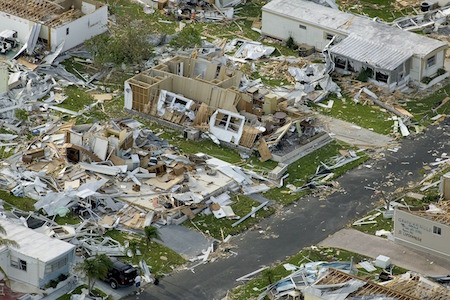 This month we will discuss social meanings inherent in children’s literature, specifically addressing some recent global and national natural disasters that resulted in the heavy loss of human life as well as the destruction of homes.
This month we will discuss social meanings inherent in children’s literature, specifically addressing some recent global and national natural disasters that resulted in the heavy loss of human life as well as the destruction of homes.
NCTE recently announced the 2016 Orbis Pictus Awards for outstanding nonfiction books for children. 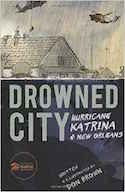 The winner, a graphic novel format book, was Drowned City: Hurricane Katrina & New Orleans by Don Brown (2015). Over the last ten years numerous books have been (and continue to be) published about Katrina. Though a distant event now, the books still leave many of us with a vague feeling of immediacy. This is especially true in the books written by various authors and illustrators who write for young readers about Katrina in present tense. Why present a historical event as a contemporary one? Perhaps the enormous loss of life (over 1800 dead from the hurricane and subsequent flooding) provides emotional poignancy. It may also be that the badly mishandled aftermath of rescue and recovery still continues in our highly politicized environment. It is an ongoing topic (Zimmermann, 2015) being analyzed: “Critics blamed an aging and neglected federal levee system and a slow state and local response following the disaster for the high loss of life and damage.”
The winner, a graphic novel format book, was Drowned City: Hurricane Katrina & New Orleans by Don Brown (2015). Over the last ten years numerous books have been (and continue to be) published about Katrina. Though a distant event now, the books still leave many of us with a vague feeling of immediacy. This is especially true in the books written by various authors and illustrators who write for young readers about Katrina in present tense. Why present a historical event as a contemporary one? Perhaps the enormous loss of life (over 1800 dead from the hurricane and subsequent flooding) provides emotional poignancy. It may also be that the badly mishandled aftermath of rescue and recovery still continues in our highly politicized environment. It is an ongoing topic (Zimmermann, 2015) being analyzed: “Critics blamed an aging and neglected federal levee system and a slow state and local response following the disaster for the high loss of life and damage.”
Almost every massive natural disaster has criticisms of the response because natural disasters expose one’s systemic, political, and social weaknesses. Natural disasters are distressing enough, but human systems worsen the calamity when victims of disaster experience enormous frustrations that lead to almost endless exhaustion as a result of weak structural responses. Perhaps that is why Zimmerman (2015) characterized such criticism as a “political storm” in an unavoidably frank evaluation of the nation’s capability to handle Katrina. More importantly, people can develop fears and concerns based on similar disasters that happened years ago by envisioning them happening anytime or anywhere in the future.
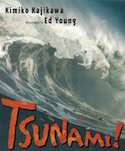 Japan’s Tohoku earthquake, hurricane Katrina, and Haiti’s earthquake shared those “political storms,” each with remarkably similar criticisms, even though the countries had different geographical locations and culturally unique government entities. Victims in all these experienced a near state of anarchy during the events and the aftermath. Most of them are still recovering from the political and physical challenges left unaddressed.
Japan’s Tohoku earthquake, hurricane Katrina, and Haiti’s earthquake shared those “political storms,” each with remarkably similar criticisms, even though the countries had different geographical locations and culturally unique government entities. Victims in all these experienced a near state of anarchy during the events and the aftermath. Most of them are still recovering from the political and physical challenges left unaddressed.
This month we will look at the recent trends in Japanese children’s literature that conveys a range of themes found in the human experiences of earthquakes and other disasters. We believe that Japanese children’s books about natural disasters serve as a vehicle for action to raise social awareness and concern for the victims. Children’s books invite readers to think of the meaning of one’s spaces and the normalcy in one’s life endangered in a disaster so as not to be forgotten over time.
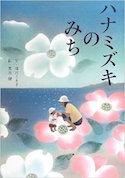 Next week, we will discuss in depth the range of Japanese children’s books that show young children’s perspectives as victim of natural disasters. Our fifteen books have different subthemes that illustrate young people’s voices as unexpected hardships and struggles invaded their lives. The following week will focus on social coping strategies shared through books in Japan, especially mobile libraries that reached out to victims of natural disasters in Japan. While book publishing is one side of literacy, making those books available for young readers is another side that communicates a more complete whole experience for some children. Reaching out and helping young victims who lost their normal spaces for literacy experiences through mobile libraries is a type of community literacy practice that Japan has a historical background for.
Next week, we will discuss in depth the range of Japanese children’s books that show young children’s perspectives as victim of natural disasters. Our fifteen books have different subthemes that illustrate young people’s voices as unexpected hardships and struggles invaded their lives. The following week will focus on social coping strategies shared through books in Japan, especially mobile libraries that reached out to victims of natural disasters in Japan. While book publishing is one side of literacy, making those books available for young readers is another side that communicates a more complete whole experience for some children. Reaching out and helping young victims who lost their normal spaces for literacy experiences through mobile libraries is a type of community literacy practice that Japan has a historical background for.
In the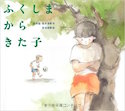 last post, we will introduce how Japanese media exercises a soft censorship around the earthquake discourses to shelter people from sensitive national political agendas. We will focus on the layers of social control and censorship found in Japanese children’s books. Natural disasters and war are both difficult, yet significant, events to people in Japan. Children’s books serve as a powerful tool for not only victims and their families to help cope and heal, but also for readers to develop empathy and connections to the victim’s experiences through characters and further develop ways to take action and provide positive “afterward” stories. We will also list different a number of different global disaster stories, from events such as Hurricane Katrina and the Haiti earthquake, so that teachers can use these stories of global disasters to amplifying critical literacy in a social studies or intercultural learning unit.
last post, we will introduce how Japanese media exercises a soft censorship around the earthquake discourses to shelter people from sensitive national political agendas. We will focus on the layers of social control and censorship found in Japanese children’s books. Natural disasters and war are both difficult, yet significant, events to people in Japan. Children’s books serve as a powerful tool for not only victims and their families to help cope and heal, but also for readers to develop empathy and connections to the victim’s experiences through characters and further develop ways to take action and provide positive “afterward” stories. We will also list different a number of different global disaster stories, from events such as Hurricane Katrina and the Haiti earthquake, so that teachers can use these stories of global disasters to amplifying critical literacy in a social studies or intercultural learning unit.
Journey through Worlds of Words during our open reading hours: Monday-Friday, 9 a.m. to 5 p.m. and Saturday, 9 a.m. to 1 p.m. To view our complete offerings of WOW Currents, please visit archival stream.
- Themes: Japanese Children's Literature, Junko Sakoi, Yoo Kyung Sung
- Descriptors: Books & Resources, Student Connections, WOW Currents
